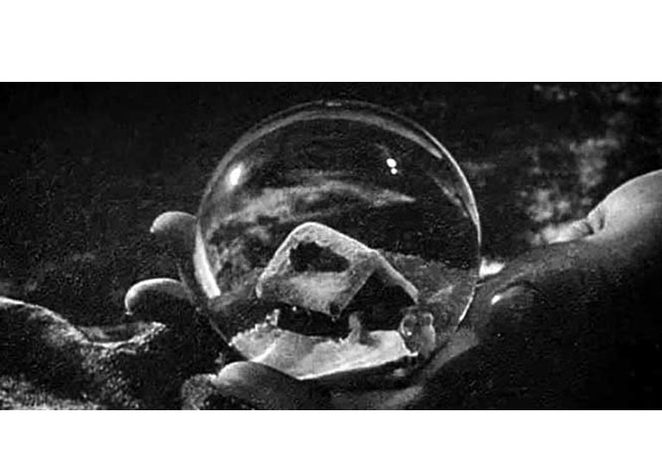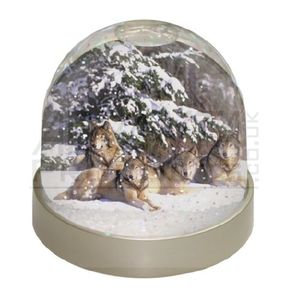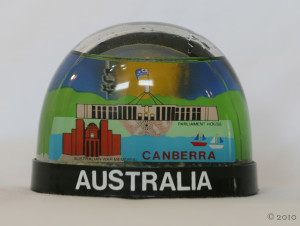COLLECTING SNOWDOMES!
Think snow dome, think Christmas tat. Or, perhaps more generously, a happy holiday trinket.
You could be wrong on both counts. For these tawdry treasures offer a serious collecting opportunity.
“The recent wave of interest in ultra-kitsch paraphernalia and culture is fuelling new collecting fields such as the phenomenon for snow domes,” says Kirsty Wallace from Grays Antiques in London.
“They are interesting as new collectables, not because they are beautifully crafted or skillfully designed but because they are fun, ridiculous and encapsulate a moment of time or history – whether a popular current Disney character or Millennium celebrations in Trafalgar Square.”
Cheap throwaway gifts made in relatively small numbers are “the perfect collectable antique” for the next generation, she adds. “We’re sure to see prices climb as the collecting market grows and strengthens, as it has done already in the US and Canada.”
How much you can make
Some prices have already displayed impressive growth. A 1990s snow dome based on The World of Brambly Hedge range of children’s books by Jill Barklem originally sold for around £20; it can now fetch around £200, according to Fiona Shoop, editor of the Antiques and Collectables magazine.Meanwhile, a figurine of the famous cartoon character Bugs Bunny holding a snow dome was recently snapped up for $1,000 (£520) in the US.

And in the UK, snow domes picked up for only a few pounds at a car boot sale can go for £15 in specialist shops if they are in reasonable condition and have unusual designs.
For many fans, their appeal is emotional. “They are perfect, little, untouched worlds that remind you of the lost simplicity of childhood,” says London collector Lucy Summers.
Actor and director Orson Welles tapped into that emotional power in his Oscar-winning 1941 film Citizen Kane.
In one of its most evocative sequences, Welles, as the dying Kane, drops and smashes a glass dome encasing a snow scene idyll – the symbol, ‘Rosebud’ of his one and only innocent love.
Deep symbolism aside, they are also great fun. “The more absurd they are, the better,” says Ms Summers, whose 300-strong collection leans heavily towards the world of kitsch. “I’ve got snow-blasted popes, nuns, flamenco dancers and Viking plunderers being showered in gold glitter. A Dolly Parton snow dome is top of my wish list.”
Origins
Many consider them the height of bad taste but their origin as descendants from the European glass paperweights of the late 19th century
is far from trashy. The earliest domes date back to the Paris
Exhibition in 1889, when some bright spark with an eye on the souvenir
market put mini Eiffel towers (the original had been intended to be
dismantled after the show) into glass globes filled with water and fake
snow.
century
is far from trashy. The earliest domes date back to the Paris
Exhibition in 1889, when some bright spark with an eye on the souvenir
market put mini Eiffel towers (the original had been intended to be
dismantled after the show) into glass globes filled with water and fake
snow.Astonishingly, the idea caught on and, thanks to improved transport, snow domes took up residence on many a mantelpiece in the late Victorian era.
Mass production began in the US during the 1920s and, in 1950s Germany, the development of a new type of plastic led to the birth of the ubiquitous blue-backed ‘domes’ found in tourist shops all over the world.
Asia snaffled a large chunk of the market in the 1960s but ran into trouble when Hong Kong snow domes were found to contain water from the polluted harbour and were temporarily banned from the US.
As with any other type of collection, pick a theme and then stick to it.
Religious snow domes, ones featuring famous buildings or those with a political theme are all collectable and should translate into value. There are some ground rules, however.
What to look for
“Go for glass rather than plastic – and thick plastic rather than thin,” advises Ms Shoop.Anything that marks out a snow dome’s individuality against its mass-produced rivals will make it more valuable. That said, it is worth looking for mistakes in mass-made domes, such as a misspelt name or upside down figurine inside. One much sought-after commemorative globe features Parliament House in the Australian capital of Canberra. This was suddenly withdrawn from the market when someone spotted that it seemed to be flying the Japanese flag rather than the Australian one.

“Look for domes that were made for a one-off event, such as the Barcelona Olympics where only a limited amount will have been produced,” advises Ms Shoop. Domes made for advertising purposes fit the bill too, as they are usually only available for a short period.
Keep an eye on the news, adds Ms Shoop. The ups and downs of figures in political life can affect prices. A dome featuring a miniature Spitting Image puppet of the former Soviet Union president Mikhail Gorbachev is currently on offer on a US website for $50.
World events may also push up the price of some snow domes. “One of my favourites is a musical number I bought in New York in the late 1990s,” says Ms Summers. “It features the World Trade Center twin towers, which means it will eventually be worth quite a lot.
“But even if I wanted to sell it, it wouldn’t fetch a great deal now because feelings about 9/11 are still so raw.”
Once you’ve decided on the type of snow dome you want to collect, they shouldn’t be difficult to track down.
Car boot sales – particularly those taking place a few weeks after the holiday season, when people have grown tired of their souvenirs – are usually a rich source.
Most of the best websites for both finding and selling domes are based in the US or Australia. But wherever you buy from, don’t skimp on the packaging.
As Citizen Kane knew better than most, there’s nothing so sad as a smashed snow dome.
Useful Links
- ‘Snowdomes’ by Nancy McMichael (Abbeville Press): a book written by a collector for collectors
- Snowdomes.com: a US site featuring a catalogue of domes for sale
- eBay is a great place to look for rarities




